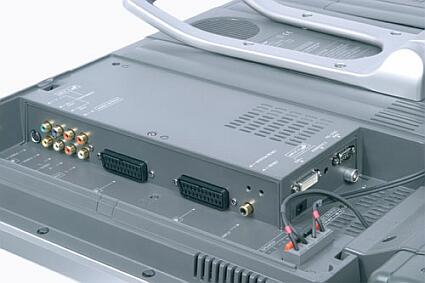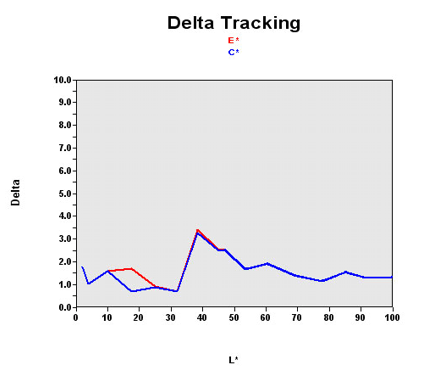26" LCD TVs: Are They Ready for Prime Time?
Equipment
The connectivity on this unit is complete - about the only thing that's lacking, maybe, is HDMI. Everything else is there. The set uses dual-lamp technology already introduced by Sony on its computer monitors, which allows finer adjustment of the brightness.
Since this LCD TV does have a VGA/DVI connector, we were able to take our test measurements.
Sharp Aquos LC26GA3E: Good Color... For A TV
Again we recall that this graph shows the difference between the desired color shade and the one and that was actually displayed.
- If DeltaE >3, the color displayed is significantly different from the theoretical one, meaning that the difference will be perceptible to the viewer.
- If DeltaE <2, LaCie considers the calibration a success, with a slight difference remaining, but on that will be all but undetectable to the user.
- If DeltaE < 1, the color fidelity is perfect.
This is an odd calibration profile. In fact, it shows us that in terms of color fidelity, LCD TVs are a few years behind LCD computer monitors. In fact, in this case the situation wasn't that catastrophic - the maximum delta was 3.5, which is within the acceptable limit. But the fidelity of the dark colors is what was surprising. Normally, LCD displays have a big problem with displaying dark colors. But here, those colors were fairly well reproduced, which is really a big positive point for this TV. In fact, the calibration shows that it's possible to attain a standard color temperature of 6500K; but getting a gamma of 2, which we use for all our calibrations, was problematic.
| Black spot | White spot | Contrast |
|---|---|---|
| 0.52 | 259 | 498: 1 |
This black level may seem high to those of you who habitually read these pages, where we usually test computer monitors. However, you have to put things in the proper perspective. To do the job for which they're intended, TV sets have to operate at high brightness because of the great viewing distances of TVs. The result of that high brightness is an increase in the black level. Yet the contrast ratio we measured, 498:1, is not bad at all. In practice, even the black level doesn't seem all that bad. Fortunately, to the human eye, the black appears blacker due to contrast with the very bright lighted areas.
Get Tom's Hardware's best news and in-depth reviews, straight to your inbox.

